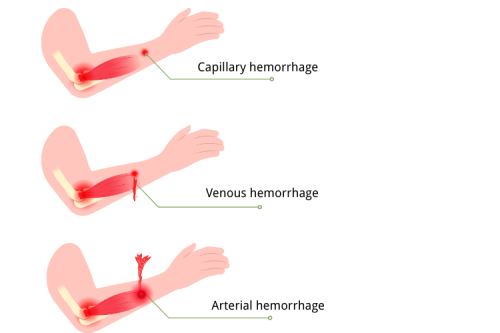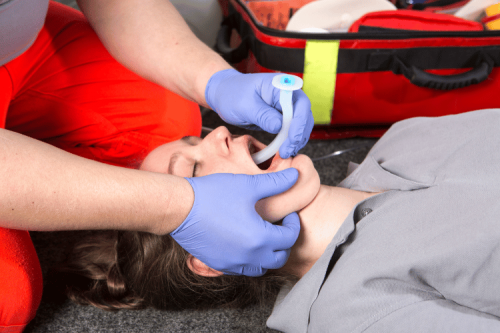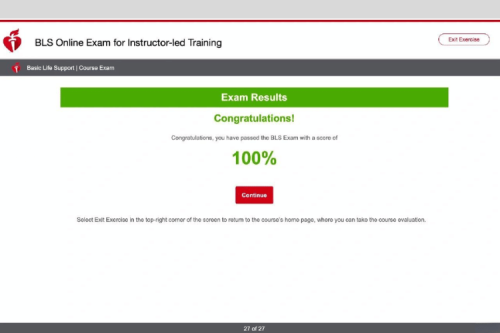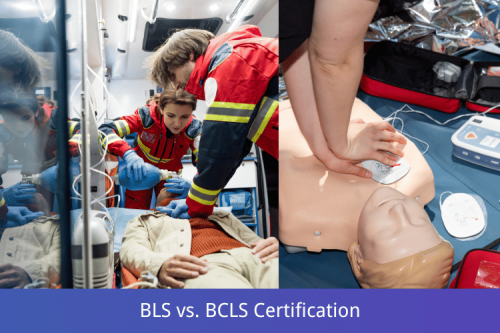
Shock is a life-threatening medical condition that occurs when the body's organs and tissues do not receive enough oxygen and nutrients due to inadequate blood flow. While many people associate shock with emotional distress, in medical terms, it refers to a critical physiological state that requires immediate intervention.
Shock can arise from various causes, each with distinct mechanisms and clinical presentations. For healthcare professionals and emergency responders, recognizing the type of shock is crucial for administering the right treatment. Even for the general public, understanding the basics can help in identifying emergencies early.
Let’s explore the different types of shock, their underlying causes, key symptoms, and the essential treatments needed to stabilize a patient.
The Different Types of Shock Explained
Shock is a life-threatening condition that occurs when the body cannot circulate enough blood to meet its tissues' needs. This can lead to organ damage or failure if not treated promptly. There are several types of shock, each with unique causes, symptoms, and treatments. Below, we break down the major types of shock to help you understand their mechanisms and impact.
Hypovolemic Shock: Causes and Effects
Hypovolemic shock happens when the body loses a significant amount of blood or fluids, reducing the amount of blood that can circulate through the body. Blood loss might result from injury, internal bleeding, or medical conditions like gastrointestinal bleeding. Alternatively, severe dehydration caused by vomiting, diarrhea, or burns can also lead to this condition.
Symptoms:
- Rapid heartbeat
- Low blood pressure
- Dry skin or a lack of sweating
- Cool, clammy extremities
- Extreme thirst or reduced urination
- Confusion or loss of consciousness
Causes:
- Trauma causing severe bleeding
- Complications during surgery
- Excess fluid loss due to severe burns or dehydration
Treatments:
Treatment focuses on restoring fluid levels and stopping the source of fluid loss. This often involves:
- Immediate administration of intravenous (IV) fluids or blood transfusions
- Surgery to stop internal bleeding
- Medications like vasopressors to stabilize blood pressure
Cardiogenic Shock: When the Heart Fails
Cardiogenic shock occurs when the heart cannot pump enough blood to sustain the body's needs. The most common cause is a heart attack, but other cardiac conditions, such as cardiomyopathy or arrhythmias, can also contribute.
Symptoms:
- Chest pain or pressure
- Shortness of breath
- Weak pulse
- Sweating
- Cold and clammy skin
- Dizziness or fainting
Causes:
- Heart attacks (myocardial infarctions)
- Problems with heart valves
- Weakening or inflammation of the heart muscle
Treatments:
Treating cardiogenic shock requires a combination of medications and interventions to restore heart function. Options include:
- Medications such as inotropes to improve heart pumping
- Fluid administration to maintain blood pressure
- Procedures like angioplasty to open blocked arteries
- Mechanical assistance through devices like intra-aortic balloon pumps or ventricular assist devices (VADs)
Septic Shock: The Role of Infections
Septic shock is the most severe form of sepsis, a condition triggered by an overwhelming response to infection. When bacteria, viruses, or fungi invade the bloodstream, the body releases chemical mediators that can cause widespread inflammation, organ dysfunction, and dangerously low blood pressure.
Symptoms:
- Fever or abnormally low body temperature
- Rapid heart rate
- Increased breathing rate
- Warm, flushed skin in early stages, followed by cool skin later
- Confusion or disorientation
- Decreased urine output
Causes:
- Severe bacterial infections, such as pneumonia or urinary tract infections
- Blood infections (bacteremia)
- Post-surgical infections
- Fungal infections
Treatments:
Septic shock requires immediate intensive care. Treatment strategies include:
- Rapid administration of broad-spectrum antibiotics
- IV fluids to maintain blood pressure
- Use of vasopressors to stabilize circulation
- Support for affected organs, such as dialysis for kidneys or ventilators for the lungs
Anaphylactic Shock: Allergic Reactions Gone Severe
Anaphylactic shock is a severe allergic reaction that happens when the immune system overreacts to an allergen, releasing chemicals that cause a sudden drop in blood pressure and narrowing of airways. Common triggers include certain foods, insect stings, medications, and latex.
Symptoms:
- Difficulty breathing
- Swelling in the face, throat, or tongue
- Hives or an itchy rash
- Rapid pulse
- Nausea or vomiting
- Loss of consciousness in severe cases
Causes:
- Allergic reactions to food (e.g., peanuts, shellfish)
- Reactions to medications like antibiotics
- Bee or wasp stings
- Contact with latex or other allergens
Treatments:
Immediate treatment is critical for anaphylactic shock and may involve:
- Administration of intramuscular epinephrine (adrenaline) to reverse symptoms
- Antihistamines and corticosteroids to reduce inflammation
- IV fluids and oxygen for supportive care
- Observation in a medical setting to manage potential recurrence
Neurogenic Shock: Spinal Cord Injuries and More
Neurogenic shock develops when the nervous system is unable to maintain proper blood vessel tone, which leads to significantly reduced blood pressure. This often occurs after spinal cord injuries, but other conditions affecting the autonomic nervous system can also contribute.
Symptoms:
- Low blood pressure
- Slow heart rate (bradycardia)
- Warm, flushed skin due to pooling of blood in extremities
- Reduced body temperature
- Dizziness or fainting
Causes:
- Spinal cord injury, particularly damage to the cervical spine
- Damage to the autonomic nervous system
- Severe brain injuries or strokes
Treatments:
Treatment focuses on stabilizing blood pressure and addressing the underlying cause. This may include:
- Administering IV fluids to increase blood volume
- Vasopressor medications to raise blood pressure
- Immobilizing the spine to prevent further damage
- Surgery or other interventions to treat spinal cord injury
Obstructive Shock: Physical Blockages in Blood Flow
Obstructive shock results from a physical obstruction that impedes blood flow, preventing it from reaching tissues and organs. This might stem from conditions like pulmonary embolism, cardiac tamponade, or tension pneumothorax.
Symptoms:
- Rapid breathing
- Low blood pressure
- Distended neck veins
- Trouble breathing or chest pain
- Signs of poor perfusion, such as pale or mottled skin
Causes:
- Pulmonary embolism (blood clots in the lungs)
- Pericardial tamponade (fluid buildup around the heart)
- Tension pneumothorax (collapsed lung due to air in the chest cavity)
Treatments:
The treatment approach depends on relieving the obstruction:
- For pulmonary embolism, thrombolytics or surgery to remove the clot may be required
- Cardiac tamponade is often treated through pericardiocentesis to drain excess fluid
- Tension pneumothorax requires emergency decompression using a needle or chest tube
Understanding these different types of shock underscores the critical importance of identifying and treating them promptly. Each condition presents unique challenges, but timely intervention can save lives and minimize complications.
Recognizing the Symptoms of Shock
Early Warning Signs to Watch For
Shock is a potentially life-threatening condition that occurs when the body is not getting enough blood flow. Recognizing its early signs can make a significant difference in outcomes, providing time to seek immediate medical attention. The initial warning signs are often subtle but can escalate quickly.
One of the earliest indicators of shock is a noticeable change in mental status. The individual may appear confused, disoriented, or unusually anxious. This happens because the brain is not receiving enough oxygen or nutrients. Additionally, cold and clammy skin is a hallmark sign. Reduced blood circulation forces the body to shunt blood toward vital organs, leaving extremities cool to the touch.
Another early symptom to watch out for is a rapid pulse. The heart works harder to compensate for diminished blood flow, which results in a noticeably stronger and faster heartbeat. At the same time, shallow or rapid breathing often accompanies these symptoms, as the body attempts to get more oxygen into the blood.
If left untreated, these signs can progress into severe symptoms, including unconsciousness, blue-tinted lips or fingernails, and extremely low blood pressure. Observing and acting on these warning signs without delay is crucial.
Symptoms by Type of Shock
Shock can manifest in several types, each with distinct causes and symptoms. Understanding the variations can help in identifying and responding effectively.
Hypovolemic Shock
This type of shock results from severe blood or fluid loss, such as from heavy bleeding, dehydration, or burns. Symptoms include intense thirst, dry mouth, and pale or gray skin due to reduced blood volume. An individual may feel lethargic or weak and could collapse if blood pressure drops too low.
Cardiogenic Shock
Cardiogenic shock occurs when the heart fails to pump blood adequately. This can happen during heart attacks or when there’s severe heart disease. Symptoms include chest pain, irregular heartbeats, and difficulty breathing. Swelling in the legs or feet may also appear due to fluid buildup.
Septic Shock
Septic shock arises from severe infections that spread through the bloodstream, causing widespread inflammation. A key symptom is a fever or abnormally low body temperature, coupled with a sudden drop in blood pressure. Other signs include chills, rapid heartbeat, and confusion.
Anaphylactic Shock
Triggered by severe allergic reactions, anaphylactic shock presents with symptoms like hives, swelling (particularly around the face and throat), and difficulty breathing. Other warning signs include nausea, vomiting, or dizziness. Without immediate administration of epinephrine, this type of shock can quickly become fatal.
Neurogenic Shock
This rare type is caused by damage to the spinal cord, which disrupts the nervous system’s ability to regulate blood flow. Symptoms include warm, flushed skin below the injury site, dangerously low blood pressure, and slow heart rate.
Why Timely Recognition Is Critical
The importance of recognizing shock as early as possible cannot be overstated. Without prompt intervention, shock can lead to organ failure and even death. The longer the delay, the harder it becomes for medical professionals to reverse its effects.
For example, in hypovolemic shock, early detection can allow for quick fluid replacement, preventing irreversible damage to the organs. Similarly, in cases of anaphylactic shock, rapid use of an epinephrine auto-injector can save a life.
Ignoring symptoms can also diminish the efficacy of medical interventions. Once shock progresses to an advanced stage, the body’s systems may shut down, making recovery difficult even with intensive care. Timely action not only improves the chances of survival but also reduces the likelihood of long-term complications.
By staying informed about the warning signs and various types of shock, individuals and caregivers can act decisively when seconds matter most. Recognizing the symptoms early and seeking immediate medical attention is the key to saving lives.
How Is Shock Diagnosed? Tests and Procedures?
Clinical Assessments and Physical Exams
Diagnosing shock begins with a thorough clinical assessment and physical examination. The initial step involves evaluating vital signs, such as blood pressure, heart rate, respiratory rate, and body temperature, as these measurements often provide the first clues to the presence of shock. Low blood pressure (hypotension) alongside a rapid heart rate (tachycardia) may indicate the body is struggling to maintain adequate circulation.
During the physical exam, a physician looks for signs of poor perfusion, such as cool, clammy skin, pale complexion, or delayed capillary refill, which indicate that oxygen and blood flow to tissues are compromised. The patient’s level of consciousness is also assessed, as confusion or altered mental states may suggest decreased oxygen delivery to the brain.
Additional findings, such as reduced urine output or abnormal breathing patterns, may be reported, as these are potential markers of organ dysfunction. Combined with a thorough medical history to identify risk factors or past conditions, physical exams provide critical insight into the presence and severity of shock.
Blood Tests and Imaging Techniques
Blood Tests
Blood work is a vital component of shock diagnosis because it provides an in-depth look at how different body systems are functioning. A physician may order tests such as arterial blood gas (ABG) analysis to evaluate levels of oxygen, carbon dioxide, and pH in the blood, which helps assess respiratory and metabolic stability.
Other blood tests include a complete blood count (CBC) to detect possible infections, anemia, or bleeding, and blood lactate levels to determine if tissues are receiving enough oxygen. High levels of lactate are often a key sign of tissue hypoxia, a hallmark of shock. Electrolyte panels and kidney function tests, like creatinine and blood urea nitrogen (BUN), monitor the effects of poor blood flow on organs.
Additionally, tests for cardiac markers such as troponin may be necessary if cardiogenic shock is suspected. Blood cultures can also identify the presence of infection in cases of septic shock, providing leads on the potential underlying cause.
Imaging Techniques
Imaging tests play a complementary role in diagnosing shock, particularly when the cause is unclear. For instance, a chest X-ray can reveal signs of fluid accumulation in the lungs, suggesting cardiogenic or distributive shock. An ultrasound is frequently used to assess heart function (echocardiography) or detect internal bleeding, which is common in hypovolemic shock.
Advanced imaging techniques like a CT scan or MRI may be needed to identify injuries, blockages, or other structural abnormalities. These tools can provide detailed pictures of internal organs, guiding treatment strategies.
Identifying Underlying Causes
The final step in diagnosing shock involves pinpointing the root cause, as treatments vary based on the type of shock. This process often requires synthesizing data from clinical assessments, blood work, and imaging studies.
For example, symptoms like infection or fever combined with positive blood cultures strongly suggest septic shock. Trauma history or a drop in hemoglobin may point toward hypovolemic shock from bleeding. Cardiogenic shock might be diagnosed if imaging or blood tests reveal heart failure or an acute myocardial infarction.
Distributive shock, seen in conditions like anaphylaxis or neurogenic shock, can often be identified through patient history of allergic reactions or recent spinal injury. Addressing the underlying cause is essential to stabilizing a patient and preventing further complications.
Through a careful combination of assessments, laboratory tests, and imaging, doctors can not only diagnose shock but also uncover its origin, guiding appropriate and timely interventions.
Emergency Treatments for Shock
Shock is a life-threatening condition requiring immediate medical intervention to restore adequate circulation and oxygen delivery to critical tissues and organs. Knowing what steps to take during such emergencies can significantly impact patient outcomes. Below are key treatment approaches for managing shock across different scenarios.
Fluid Resuscitation and Blood Transfusions
One of the first strategies in treating shock involves fluid resuscitation. Shock often results in decreased blood volume, which reduces the heart's ability to circulate blood effectively. The goal of fluid resuscitation is to increase the circulatory volume and improve tissue perfusion.
-
Crystalloid Solutions Crystalloids, such as saline or Ringer’s lactate, are commonly administered intravenously to replace lost fluids quickly. They are effective in raising blood pressure and restoring circulation in most types of shock.
-
Colloid Solutions Colloids, such as albumin or dextran, contain larger molecules that remain in the bloodstream longer than crystalloids. These fluids are used in specific cases where maintaining oncotic pressure is crucial.
-
Blood Transfusions When shock results from significant blood loss, as in hemorrhagic shock, blood transfusions are critical. Packed red blood cells are typically transfused to restore oxygen-carrying capacity, and plasma may be added to address clotting deficiencies.
The choice between crystalloids, colloids, or blood products depends on the underlying cause of shock and the patient's clinical status.
Medications for Stabilizing Blood Pressure
Medications play a vital role in stabilizing blood pressure, particularly in cases where fluid resuscitation alone is insufficient. These drugs help maintain perfusion to vital organs by constricting blood vessels, improving heart function, or altering blood volume.
-
Vasopressors Vasopressors like norepinephrine, dopamine, or epinephrine are administered to constrict blood vessels, which increases systemic vascular resistance and raises blood pressure. They are often used in septic or distributive shock.
-
Inotropes Medications such as dobutamine and milrinone enhance cardiac output by improving the heart's pumping efficiency. These are particularly beneficial in cardiogenic shock, where the heart struggles to pump effectively.
-
Corticosteroids Steroids like hydrocortisone may be used in some cases of septic shock, especially when standard treatments do not stabilize blood pressure. They help regulate the immune and inflammatory responses that contribute to the condition.
Monitoring is critical when using these medications, as incorrect dosing or prolonged use can lead to adverse effects, such as arrhythmias or tissue ischemia.
Surgical Interventions for Obstructive Shock
Obstructive shock occurs when a physical barrier impedes blood flow, reducing perfusion to vital organs. Surgical interventions are often required to remove or correct the blockage, as other treatments alone cannot solve the problem.
-
Cardiac Tamponade Management When cardiac tamponade is the cause, an emergency procedure called pericardiocentesis is performed to remove fluid from the sac surrounding the heart. This relieves pressure on the heart, allowing it to pump more effectively.
-
Pulmonary Embolism Treatment Large pulmonary embolisms may necessitate surgical thrombectomy or catheter-based interventions to remove or dissolve blood clots obstructing pulmonary arteries.
-
Tension Pneumothorax For tension pneumothorax, immediate needle decompression followed by chest tube insertion is essential to release trapped air and restore normal lung function, alleviating pressure on the heart and blood vessels.
-
Aortic Dissection Repair When an aortic dissection leads to obstructive shock, emergency surgery is often required to repair the damaged portion of the aorta. This may involve graft placement or endovascular techniques to stabilize and reinforce the artery.
Each intervention is tailored to the specific cause of obstruction, with the primary focus on swiftly restoring blood flow and addressing the source of the problem.
Effective treatment of shock requires rapid diagnosis and a multi-disciplinary approach. Fluid replacement, medication administration, and surgical options are used in tandem to address the underlying causes and stabilize the patient. Recognizing the need for immediate action and implementing the appropriate treatments can make the difference between life and death.
First Aid Measures for Shock: A Step-by-Step Guide
Shock is a life-threatening condition that occurs when the body doesn't get enough blood flow. This can prevent organs from functioning properly and can lead to serious complications if not treated promptly. Knowing how to administer first aid for someone in shock is essential for stabilizing their condition until professional medical help arrives. This guide covers key steps to take, with a focus on positioning the patient, managing bleeding and other symptoms, and performing CPR when necessary.
Positioning the Patient for Optimal Blood Flow
The first step in addressing shock is to help restore proper blood flow to the patient's vital organs. Proper positioning is crucial in achieving this.
-
Lay the Patient Down If the person is conscious and able to follow your instructions, have them lie flat on their back. This position minimizes strain on the body and promotes blood flow.
-
Elevate the Legs (if Appropriate) To help increase blood flow to the heart and brain, elevate the person's legs about 12 inches off the ground. This should only be done if there are no signs of injury to the legs, pelvis, or spine. Avoid moving the person excessively if such injuries are suspected.
-
Keep the Head Flat or Slightly Elevated While the legs are raised, ensure the patient's head remains flat or slightly elevated. If they are experiencing difficulty breathing (common with shock caused by heart problems), it may help to slightly raise their upper body instead of their legs.
-
Maintain Body Temperature Cover the person with a blanket or clothing to keep them warm. Shock often reduces body temperature, and maintaining warmth helps prevent further complications like hypothermia.
Managing Bleeding and Other Symptoms
If bleeding is the cause of shock, controlling blood loss is a top priority. Other symptoms, like rapid breathing and confusion, should also be addressed to stabilize the patient.
-
Control Bleeding
- Apply direct pressure to any open wounds with a clean cloth or bandage. If the cloth becomes soaked with blood, do not remove it; instead, add more material on top to reinforce pressure.
- If possible, apply a sterile dressing and use a tourniquet above the bleeding site (only as a last resort when pressure fails and the bleeding is life-threatening).
-
Check Airway, Breathing, and Circulation (ABCs)
- Make sure the airway is clear and unobstructed. If the person is unconscious, tilt their head slightly back and lift their chin to open the airway.
- Observe their breathing. If they are breathing normally, monitor for changes. If not, prepare for CPR steps following the guidelines below.
- Check for signs of circulation, such as movement, cough, or normal breathing patterns.
-
Manage Other Symptoms
- Watch for signs of worsening shock, such as extreme confusion, pale or clammy skin, and weak or rapid pulse.
- Keep the patient calm and avoid unnecessary movements. Stress can further disrupt vital functions during shock.
When and How to Perform CPR
Shock can sometimes lead to unresponsiveness or cardiac arrest, where the heart stops beating effectively. If this happens, administering CPR promptly may save the person’s life.
-
Assess the Need for CPR
- Shake the person gently and shout to see if they respond. If unresponsive, immediately check for breathing.
- If the person is not breathing or only gasping, and there is no pulse, begin CPR without delay.
-
Perform Chest Compressions
- Place the heel of one hand in the center of the chest, then place your other hand on top, interlocking the fingers.
- Push hard and fast, compressing the chest at least 2 inches deep at a rate of 100-120 compressions per minute. Allow the chest to fully recoil between compressions.
-
Deliver Rescue Breaths (if Trained)
- After 30 chest compressions, provide two rescue breaths. Tilt the person's head back, lift the chin, and pinch the nose closed. Seal your mouth over theirs and give a breath for about 1 second, making the chest rise. Repeat for the second breath.
- Continue cycles of 30 compressions and 2 breaths until professional help arrives or the person regains consciousness. If you are not trained in rescue breathing, continue hands-only CPR.
-
Use an Automated External Defibrillator (AED), if Available
- Turn on the AED and follow its voice or visual prompts. Attach the adhesive pads to the person’s bare chest as directed.
- Stand clear while the AED analyzes the heart rhythm, and deliver a shock if instructed. Resume CPR immediately after the shock and continue as needed.
By knowing how to position the patient, control bleeding, and provide CPR when required, you can effectively manage shock in the critical moments before emergency responders take over. Always aim to remain calm and reassure the patient, as your composure can make a significant difference in their recovery.
Long-Term Management and Prevention of Shock
Lifestyle Changes to Reduce Risk
Preventing shock begins with adopting a lifestyle that supports overall health and minimizes risk factors. By actively managing your well-being, you can reduce the likelihood of conditions that could lead to shock. Here are some practical and impactful lifestyle changes:
-
Healthy Diet: A balanced diet rich in fruits, vegetables, whole grains, lean proteins, and healthy fats helps maintain cardiovascular health, reduces blood pressure, and supports the immune system. Avoiding high-salt, high-sugar, and overly processed foods is essential to keep chronic diseases like hypertension and diabetes in check, which are common precursors to shock.
-
Regular Exercise: Engaging in physical activity strengthens the heart, improves circulation, and boosts overall resilience. Aim for at least 150 minutes of moderate-intensity aerobic exercise weekly. Activities like walking, swimming, or cycling can help lower risks related to circulatory and metabolic disorders.
-
Stress Management: Chronic stress can harm the heart and weaken the body’s ability to respond to emergencies. Practice stress-relieving techniques, such as meditation, yoga, or deep-breathing exercises, to build emotional and physical resilience.
-
Avoidance of Harmful Substances: Limiting alcohol intake and quitting smoking are crucial steps in reducing risk. Both habits can compromise cardiovascular and respiratory systems, increasing susceptibility to shock in certain situations.
-
Staying Hydrated and Avoiding Overexertion: Dehydration and heat exhaustion are common triggers of hypovolemic shock. Drinking enough water daily and taking breaks during strenuous activities can minimize this risk, especially in hot climates.
Small, consistent changes in lifestyle can have a tremendous impact over time, reducing vulnerabilities and creating a foundation for long-term health.
Monitoring Chronic Conditions
Some health conditions, such as diabetes, heart disease, and severe allergies, can predispose individuals to different types of shock. Proactive monitoring and management of these conditions are vital to lowering risk.
-
Regular Medical Checkups: Routine visits to your healthcare provider allow for early detection of potential problems. Blood pressure monitoring, blood sugar tests, and cholesterol checks can help assess risks associated with conditions like cardiogenic or septic shock.
-
Adhering to Treatment Plans: Always follow prescribed medications and treatments. For example, individuals with asthma should use maintenance inhalers as directed, while those with diabetes must maintain proper blood sugar levels. Never skip doses or ignore symptoms.
-
Tracking Symptoms: Consistently track symptoms and changes to your condition. Keep a log of fluctuations in blood pressure, heart rate, or blood sugar so adjustments can be made if necessary. Make use of health-monitoring devices to simplify this process.
-
Allergy Management: Anaphylactic shock is often preventable by recognizing and managing allergic triggers. Carrying an epinephrine auto-injector (EpiPen) at all times if prescribed, avoiding known allergens, and wearing medical alert bracelets can save lives.
-
Emergency Preparedness for Chronic Illnesses: Individuals with chronic conditions often benefit from having a clear action plan in case of complications. Discuss emergency protocols with your doctor, and ensure family members know how to help if symptoms worsen.
By staying vigilant and actively managing chronic issues, the risk of life-threatening scenarios, including shock, can be significantly minimized.
The Role of Education and Training in First Aid
Educating individuals and communities about first aid plays a critical role in preventing and managing shock. Early intervention is often the difference between life and death when dealing with serious medical emergencies. Here’s how education and training make a difference:
-
Basic First Aid Training: Learning how to identify the signs of shock, such as rapid breathing, clammy skin, or confusion, is essential. Training courses provide guidance on stabilizing a person in shock, administering CPR if necessary, and preventing further complications until professional help arrives.
-
Specialized Training for High-Risk Groups: Individuals at greater risk, such as those with severe allergies or chronic illnesses, and their caregivers, should receive specialized first aid training. Learning how to administer an epinephrine injection or how to assist someone experiencing a diabetic emergency can significantly improve outcomes.
-
Community Awareness Programs: Creating educational programs in schools, workplaces, and community centers fosters widespread knowledge about shock prevention and response. These programs can increase the number of people equipped to provide immediate help in crisis scenarios.
-
Developing Emergency Action Plans: Training sessions often include guidance on creating personal and workplace emergency plans. This might involve assembling first aid kits, knowing contact numbers for emergency services, and identifying nearby hospitals.
-
Increasing Confidence in Crisis Handling: Fear and hesitation can delay critical intervention. Formal first aid education gives people the confidence to act decisively and responsibly in emergencies, ensuring victims of shock receive timely help.
When education and awareness are combined with practical skills, individuals, families, and communities can work together to reduce the occurrence and severity of shock-related emergencies.
By making lifestyle adjustments, actively managing health conditions, and equipping yourself with first aid knowledge, you can significantly lower the risk of shock and help create a safer environment for both yourself and those around you. Prevention is about empowerment, knowledge, and preparedness.
Frequently Asked Questions
Q: What are the different types of shock?
A: Shock is divided into four main categories: hypovolemic shock, cardiogenic shock, obstructive shock, and distributive shock. Each type has distinct causes and symptoms of shock, which require specific treatment of shock.
Q: What are the common causes of hypovolemic shock?
A: Hypovolemic shock is primarily caused by a significant loss of blood volume, which can occur due to hemorrhage, dehydration, or severe fluid loss. Common causes include traumatic hemorrhagic shock and other forms of fluid loss.
Q: What are the symptoms of shock?
A: Symptoms of shock include low blood pressure, rapid heartbeat, weak pulse, cool and clammy skin, confusion, and anxiety. Recognizing these signs and symptoms of shock is crucial, as it is a life-threatening condition that requires immediate attention.
Q: How is cardiogenic shock diagnosed?
A: The diagnosis of shock, particularly cardiogenic shock, typically involves a physical examination, medical history review, and diagnostic tests such as ECG, echocardiogram, and blood tests to assess cardiac function and blood flow.
Q: What treatment options are available for septic shock?
A: The treatment of shock, specifically septic shock, often includes antibiotics to combat infection, intravenous fluids to restore blood volume, and medications to support blood pressure and cardiac function. Early intervention is critical in managing this life-threatening medical condition.
Q: What first aid measures should be taken for a person showing signs of shock?
A: First aid treatment for shock includes ensuring the person's safety, laying them down with their feet elevated, keeping them warm, and monitoring their breathing and consciousness. It is essential to call for emergency medical assistance immediately.
Q: What is neurogenic shock and how does it occur?
A: Neurogenic shock occurs when there is a loss of sympathetic tone due to spinal cord injury or severe trauma, leading to vasodilation and decreased blood flow. This type of shock can cause low blood pressure and inadequate perfusion of organs.
Q: Can obstructive shock be reversed?
A: Yes, obstructive shock can often be reversed by identifying and treating the underlying cause, such as cardiac tamponade or pulmonary embolism. Timely intervention is crucial in preventing further complications and restoring adequate blood flow.
Q: What are the signs of shock in patients?
A: Signs of shock in patients may include altered mental status, pale or mottled skin, rapid breathing, and a weak or thready pulse. Recognizing these signs and symptoms of shock is essential for prompt treatment and improving outcomes.
The Bottom Line
Shock is a medical emergency that demands rapid recognition and intervention. Whether it’s from blood loss, heart failure, infection, or a physical obstruction, each type requires specific treatments to restore circulation and prevent organ failure.
For medical professionals, understanding the subtle differences between shock types can mean the difference between life and death. For everyone else, recognizing the signs—such as rapid pulse, low blood pressure, and altered consciousness—can help in seeking immediate medical help.
Timely action saves lives. If you suspect someone is in shock, call emergency services immediately and provide supportive care while waiting for help.








 Login with Google
Login with Google Login with Facebook
Login with Facebook